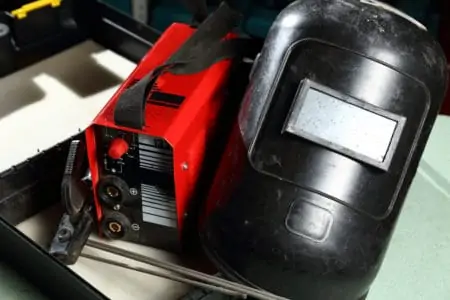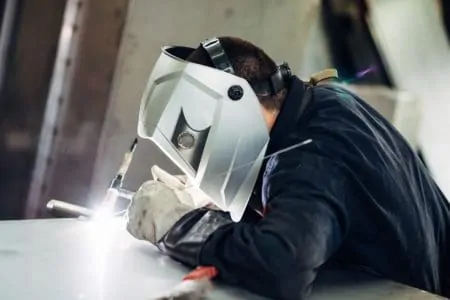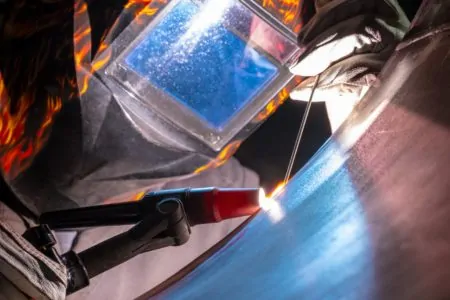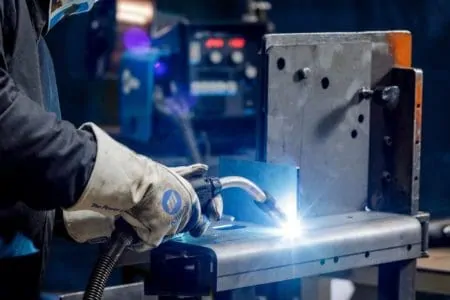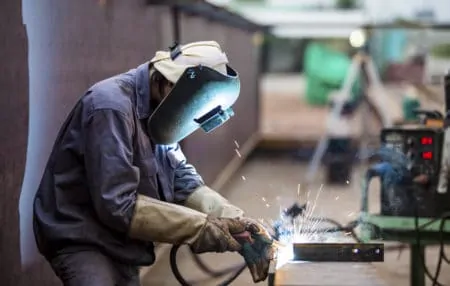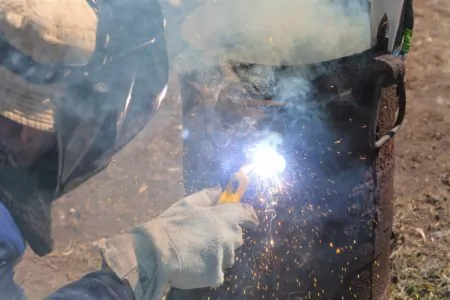Welding helmets offer high levels of eye protection when welding, especially against retinal damage caused by brilliant arc light, but if you look at the sun without any eye protection, it can cause damage.
Key Takeaways
- Welding helmets can protect your eyes from the sun’s harmful UV rays, especially during a solar eclipse. NASA recommends a shade spectrum of 12 or above for adequate protection.
- Auto-darkening helmets are a great choice as they automatically adjust the shade level based on light intensity, providing optimal protection for your eyes.
- Solar eclipse glasses are an alternative to welding helmets, but ensure they are genuine and have a shade rating of 12 or higher to effectively protect your eyes.
- Never look directly at the sun with the naked eye, as it can cause permanent eye damage. Use proper protection like a welding helmet or solar eclipse glasses to safely observe the sun.
What Can Looking at the Sun Do To Your Eyes?
Remember, as a kid, when you were told that staring at the sun makes you blind, well, that is true, but there are stages your eyes go through before complete blindness. The sun contains 3 types of light:
- Visible Light: A form of electromagnetic radiation that creates wavelengths of light visible to the naked eye. Visible light also produces heat, which the earth absorbs and re-radiates.
- Infrared Light: A type of radiant energy, invisible to the human eye. You can still feel the heat from infrared light, and it accounts for about 50 percent of the heat absorbed by the earth.
- Ultraviolet Light: The most dangerous type of light because, while it is invisible to the human eye, you can still feel it. It ages the cells in the body and burns. Too many UV rays cause the cornea cells to dry, crack and blister, just like a sunburn. It’s a condition called photokeratitis.
There are 2 types of UV rays, namely, UVA and UVB. UVA rays have a longer wavelength and cause skin damage and aging. UVB rays have a much shorter wavelength and cause burning of the skin.
Staring at the sun for prolonged periods can lead to permanent damage. Macular degeneration can occur, as well as cataracts, but in most cases, it results in temporary discomfort without any lasting effects. It feels a bit like you’ve been rubbing your eyes a lot, causing mild pain.
We don’t recommend testing this theory, especially during a solar eclipse. There are cases of solar retinopathy occurring after 30 minutes. This is thanks to the barrage of chemicals that the eye releases when the retina becomes overstimulated.
Sunglasses only mildly ease the effects, but again, after prolonged periods, the damage still occurs. If you have prescription glasses, the consequences could be even worse because the rays are magnified.
Also, sunglasses only protect your eyes directly and not from the sides. Sunlight can still penetrate behind the glasses and cause damage.
Can You Look at the Sun With a Welding Helmet?
The simple answer is yes, provided the helmet has the necessary protection. Not all welding helmets are the same, and it is not a level playing field.
How effective your eyes are shielded from the sun’s rays depends on how well the helmet blocks out harmful UV rays.
How Do Welding Helmets Protect Your Eyes?
There are several ways that a welding helmet offers eye protection.
Welding Helmet Lens Shade
Look for a welding helmet with a shade factor of 12. This shouldn’t be difficult given that most welding helmets have a shade factor of 13. This is a NASA recommendation if you want to remain safe. The higher the shade factor, the greater the protection you get from the sun’s harmful rays.
Auto-Darkening Welding Helmet
Auto shading helmets are also a great choice because they react with the changing light. Increase the sensitivity filter and decrease the delay for the best reactive transition to a higher shade level.
That’s what is so appealing about auto-darkening helmets, you can adjust them to cater to your needs, and once you have the right setting, the helmet does everything automatically.
Welding Helmet Options
There is a large selection of welding helmets available to protect your eyes from dangerous light. The old saying that you get what you pay for is as true today as it ever was. Here is a selection of welding helmets that we recommend.
Lincoln Electric K3034-4 Viking
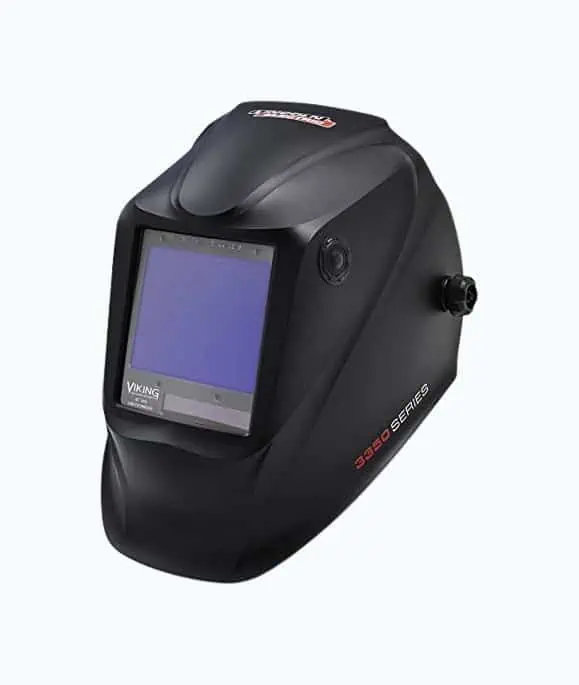
This helmet uses 4C lens technology to bring you crystal clear vision and reduce eye strain, which is ideal if you suffer from sensitive eyes.
The lens also has an optical rating of 1/1/1/1, which gives this lens industry-leading clarity. The 12.5-inch square viewing window has an auto-darkening range of 5-13, perfect for looking at the sun. It also benefits from 4 arc sensors and a 3-way control for delay, sensitivity and shade.
TOOLIOM Auto-Darkening True Color Welding Helmet
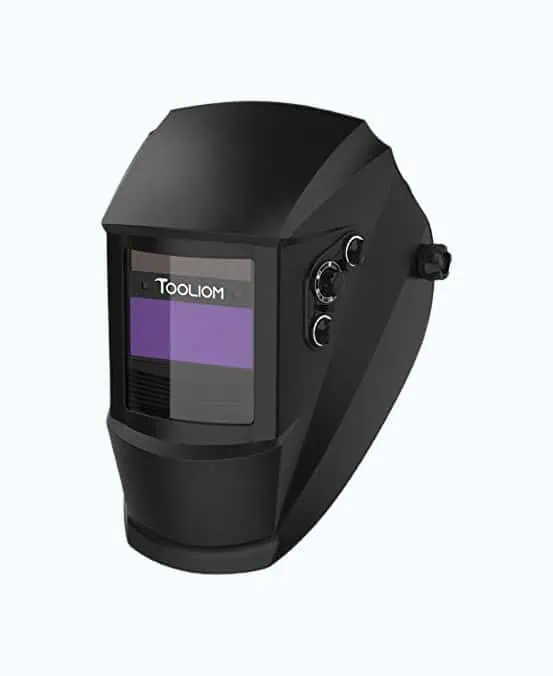
You don’t need to spend a fortune on a welding helmet capable of protecting your eyes from the sun. For a budget option, this scores pretty highly in most departments. It uses TOOLIOM’s True Color technology to provide a clear view by reducing the lime-green tint.
The viewing area of the lens is larger than the Lincoln, at 4.33 by 3.54 inches, and you do get solar cells, coupled with a 3V lithium-ion battery for extended life and continuous auto-shade adjustment.
The shade range is also a little less, at 9 to 13, but there are always limitations when the price dictates the quality.
TEKWARE Solar Powered Welding Helmet
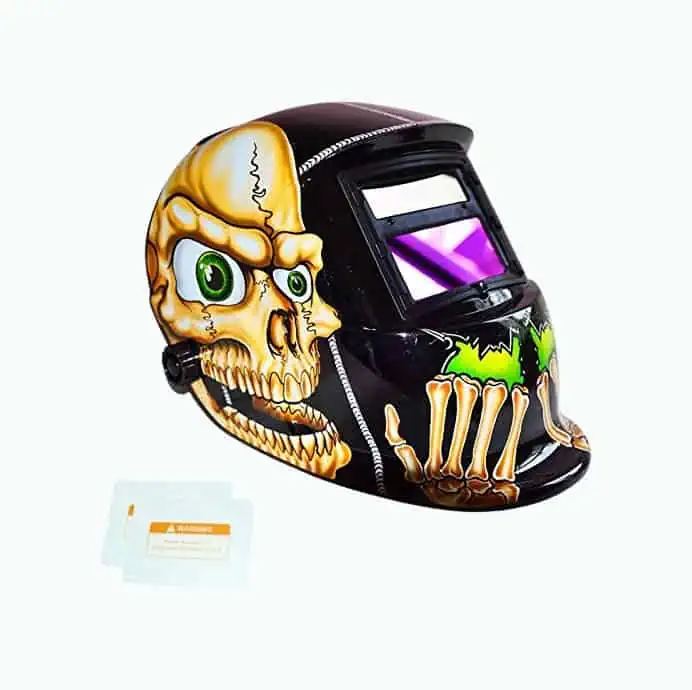
This welding helmet comes with a viewing window of 3.66 x 1.69 inches, and it has a shade range of 9 to 13. The darkness level changes instantly thanks to a probe that detects changes in the light in 1/25,000th of a second.
It has battery power and solar power, as well as a sensitivity adjustment and delay setting, to help your eyes adjust when the light changes rapidly.
Is Using Solar Eclipse Glasses Safer?
You might look a little odd standing in the crowd in a full welder’s helmet when everyone else has solar glasses. Solar glasses are a bit like 3D cinema glasses, and they have a shade rating of 12 or higher. They differ from sunglasses because ordinary glasses let thousands of shards of light penetrate your eyes compared to solar glasses.
Please be aware that solar glasses are unregulated, and there are many unscrupulous sellers out there who sell these fakes as the real deal. If you are unsure or think they may be fake, don’t buy them. They offer zero protection for your eyes.
FAQs
Blinded by the Light
Bruce Springsteen may have been blinded by the light, but you should be completely safe with the right protection. Whether you invest in solar glasses or a welders helmet, make sure you protect your eyes from brilliant light that could leave you with permanent damage.
Solar glare is everywhere. On the water, the rays reflect, causing harm. Snow can cause blindness if the UV rays reflect on your face. You don’t have to look directly into the sun to suffer the ill-effects.
